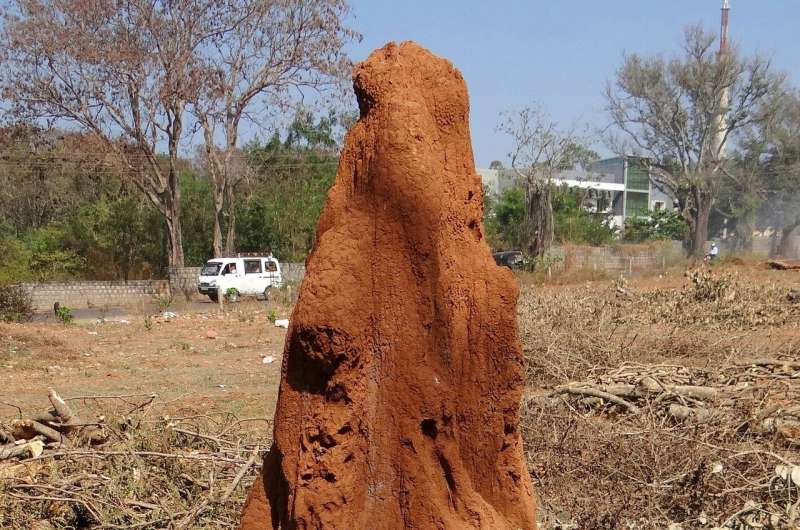This article has been reviewed according to Science X's editorial process and policies. Editors have highlighted the following attributes while ensuring the content's credibility:
fact-checked
trusted source
proofread
Climate-friendly air conditioning inspired by termites

The climate control used by termites in their mounds could inspire tomorrow's climate-smart buildings. New research from Lund University in Sweden shows that future buildings inspired by the termites could achieve the same effect as traditional climate control, but with greater energy efficiency and without its carbon dioxide footprint.
Termite mounds have a sophisticated ventilation system that enables air circulation throughout the structure. This helps to maintain and regulate temperature and humidity.
"The digitalization of design and construction processes creates enormous opportunities for how we shape architecture, and natural and biological systems provide an important model for how we can best utilize these possibilities," says David Andréen, senior lecturer at the Department of Architecture and Built Environment at Lund University, who wrote the article.
The results, published in the journal Frontiers in Materials, show a structure for buildings based on termite mounds that facilitates indoor climate control.
"The study focuses on the interior of termite mounds, which consist of thousands of interconnected channels, tunnels and air chambers, and how these capture wind energy in order to 'breathe,' or exchange oxygen and carbon dioxide with the surroundings. We have explored how these systems work and how similar structures could be integrated in the walls of buildings to drive the flow of air, heat and moisture in a new way."
The idea is thus to create new ways to control the airflow in buildings that will be significantly more energy-efficient and climate-smart than traditional air conditioning, which uses the bulk flow principle, normally driven by fans. Instead, it is possible to develop systems that are turbulent, dynamic and variable.
"These can be controlled by very small equipment and require minor energy provision," says David Andréen.
In the study, the researchers demonstrated how airflows interact with geometry—the parameters in the structure that cause the flows to arise and how they can be selectively regulated. These can be driven without using mechanical components such as fans, valves and similar, as only electronic control is required.
"This a precondition for a distributed system in which many small sensors and regulating devices are placed in the climate-adaptive building envelope through miniaturization, durability/sustainability and cost reduction," says David Andréen.
This enables regulation of the building's indoor climate and to control factors such as temperature and humidity without relying on large fans and heating and air conditioning systems. The mechanisms are dependent on being able to create complex internal geometries (on the millimeter to centimeter scale), which is only possible using 3D printing. Through 3D printing, value can be added to the built environment to create sustainable architecture that otherwise would not have been possible.
"It's fascinating how the termites' building process manages to create extremely complex well-functioning 'engineering masterpieces,' without having the centralized control or drawings to refer to that we would need," concludes David Andréen.
More information: David Andréen et al, Termite-inspired metamaterials for flow-active building envelopes, Frontiers in Materials (2023). DOI: 10.3389/fmats.2023.1126974
Provided by Lund University





















